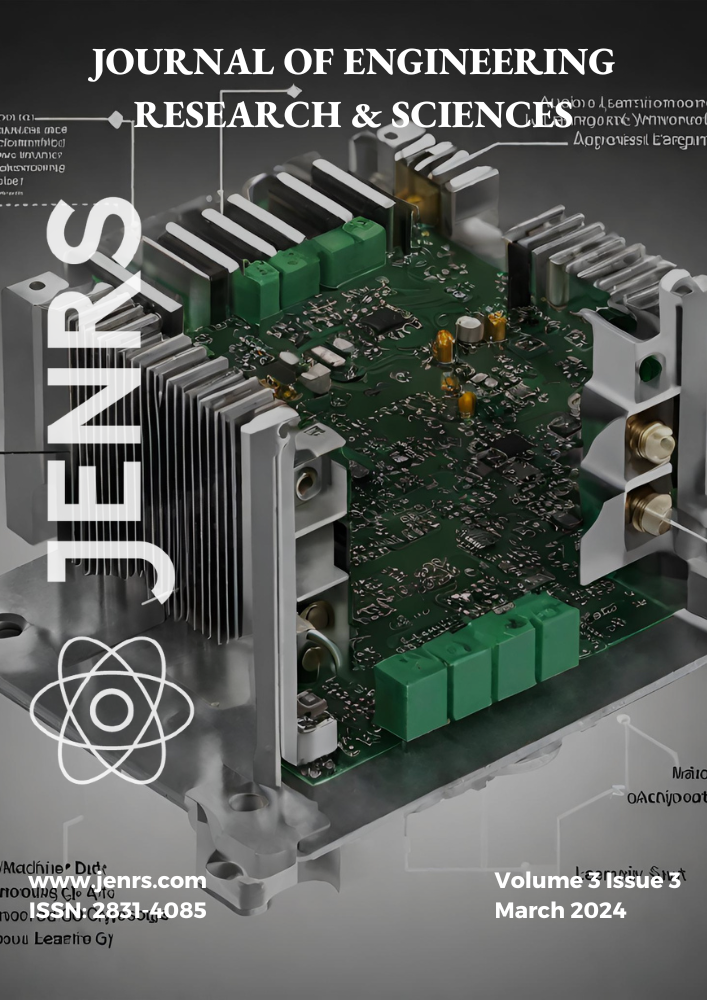
This editorial presents five papers addressing diverse technological challenges. The first investigates the impact of Environmental, Social, and Governance (ESG) performance on corporate productivity, highlighting the importance of sustainability integration. The second explores the use of FPGAs to mitigate voltage spikes in DC/DC boost converters, demonstrating the versatility of FPGA technology in power systems. The third introduces a comprehensive missile guidance system incorporating deep learning for target detection, showcasing advancements in defense systems. The fourth reviews intelligent infrared-based monitoring systems for improved asthma detection and management, addressing global healthcare concerns. Collectively, these papers underscore the breadth of technological innovations and their potential to tackle complex environmental, industrial, defense, and healthcare challenges.
Publication Month: March 2024, Page(s): i – i
Publication Month: March 2024, Page(s): ii – ii
Publication Month: March 2024, Page(s): iii – iv
Publication Month: March 2024, Page(s): v – v
Jing Zhang, Ziyang Liu
J. Engg. Res. & Sci. 3(3), 1-12 (2024);
As the market economy has continued to develop, businesses have consistently prioritized profits, excessively emphasizing income and financial gains while neglecting ecological conservation and financial fraud. Consequently, the phenomenon of “greenwashing” has emerged. How to prevent this “greenwashing” phenomenon while pursuing economic benefits and enabling high-quality business development has become a focal point. Therefore, this paper analyzes whether the ESG (Environmental, Social, and Governance) performance of listed companies has an impact on the enhancement of the Total Factor Productivity (TFP) of enterprises. This study aims to explore how companies, while striving to maximize economic interests, can more proactively undertake environmental protection and social responsibility, thereby promoting the green transformation of enterprises. Using A-share listed companies from 2012 to 2022 as the sample, through an empirical examination of the correlation between the ESG performance of listed companies in China and the TFP of enterprises, the following conclusions are drawn: (1) ESG performance significantly promotes the TFP of enterprises, indicating that higher ESG performance corresponds to higher TFP; (2) Through intermediary effect tests, it is found that corporate reputation plays a role in enhancing the TFP of enterprises. That is, through good ESG performance, a company’s reputation is improved, thereby leading to higher TFP; (3) Heterogeneity analysis demonstrates that the impact of good ESG performance on the enhancement of TFP is more significant in large-scale enterprises and state-owned enterprises.
This paper discusses FPGA technology and assesses how this technology can be implemented to eliminate voltage spikes. This study also evaluates how FPGA can be used to remove the static voltage errors from the DC/DC boost converter. This technology is used to remove the voltage spikes when the impedance load is changed instantly. The FPGA stands for field programmable gate array. This system is used to control the dynamic behavior of a such system in practice. Through the use of this FPGA technology, it is very easy to implement such control algorithms that can able to work in real-time, and also their sampling period is very low. The required output can be achieved through the parallel implementation of control algorithms. In this paper, there are some experimental results through the use of FPGA technology in boost converter.
Mirza Hodžić, Naser Prljača
J. Engg. Res. & Sci. 3(3), 19-26 (2024);
Variants of proportional navigation (PN) are perhaps mostly used guidance laws for tactical homing missiles. PN aims to generate commanding missile lateral acceleration proportional to line of sight (LOS) angular rate, so that missile velocity vector rotates in such a way to assure interception of a target. In order to generate commanding lateral accelerations, the guidance system needs measurements of LOS angular rate and the closing velocity between the missile and the target, or the missile velocity. A device which provides guidance information is referred to as the missile seeker. In the case of imaging based seekers (visible light (EO), infrared light (IIR)), LOS rate is estimated using imaging sensor, while closing or missile velocity is measured using appropriate sensors or guess estimated. In this paper, we present the design and simulation of a missile homing system which includes: true PN guidance law, linear multiloop acceleration autopilot, and gimbaled imaging based missile seeker. Target seeker uses advanced deep machine learning object detection YOLO (You only look once) model, for target detection and tracking as well as LOS rate estimation. Comprehensive simulation model, consisting of full 6DOF missile and controls dynamics, 3D world and camera model, is developed. Intensive simulation results show performances of the proposed missile homing system.
Auns Qusai Al-Neami, Zina Ali Abed
J. Engg. Res. & Sci. 3(3), 27-32 (2024);
Asthma is one of the chronic diseases that affected on the respiratory system. Studies had showed that more than 350 million people who suffering from asthma around the world which is equivalent to 1 in each 12 adults. Many intelligent monitoring systems had proposed in order to help the patient to know the situation before the frenzy happens. This approach has additionally been applied by individuals wanting to boost the standard of life by utilizing this technology. This paper tends to perform a comprehensive coverage and review that aim to show and analyze the advances of the most recent studies supported medical aid in the field of respiratory system especially monitoring and detection of the asthma disorder based on infrared sensors. The present analysis covers revealed manuscripts in scientific journals and recognized conferences since the year 2016. Also, it tends to show a reference model supported the analysis of the resources used from the chosen studies. Finally, the objective of the present proposal is to assist future enthusiasts to get and enumerate the specified factors related with asthma monitoring systems based on infrared sensors.
This sidebar is currently being updated and may temporarily overlap with the pages.

This work is licensed under a Creative Commons Attribution-ShareAlike 4.0 International License.